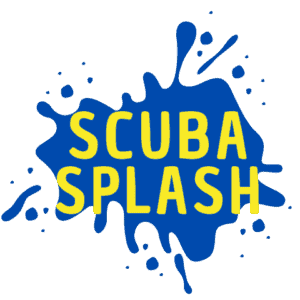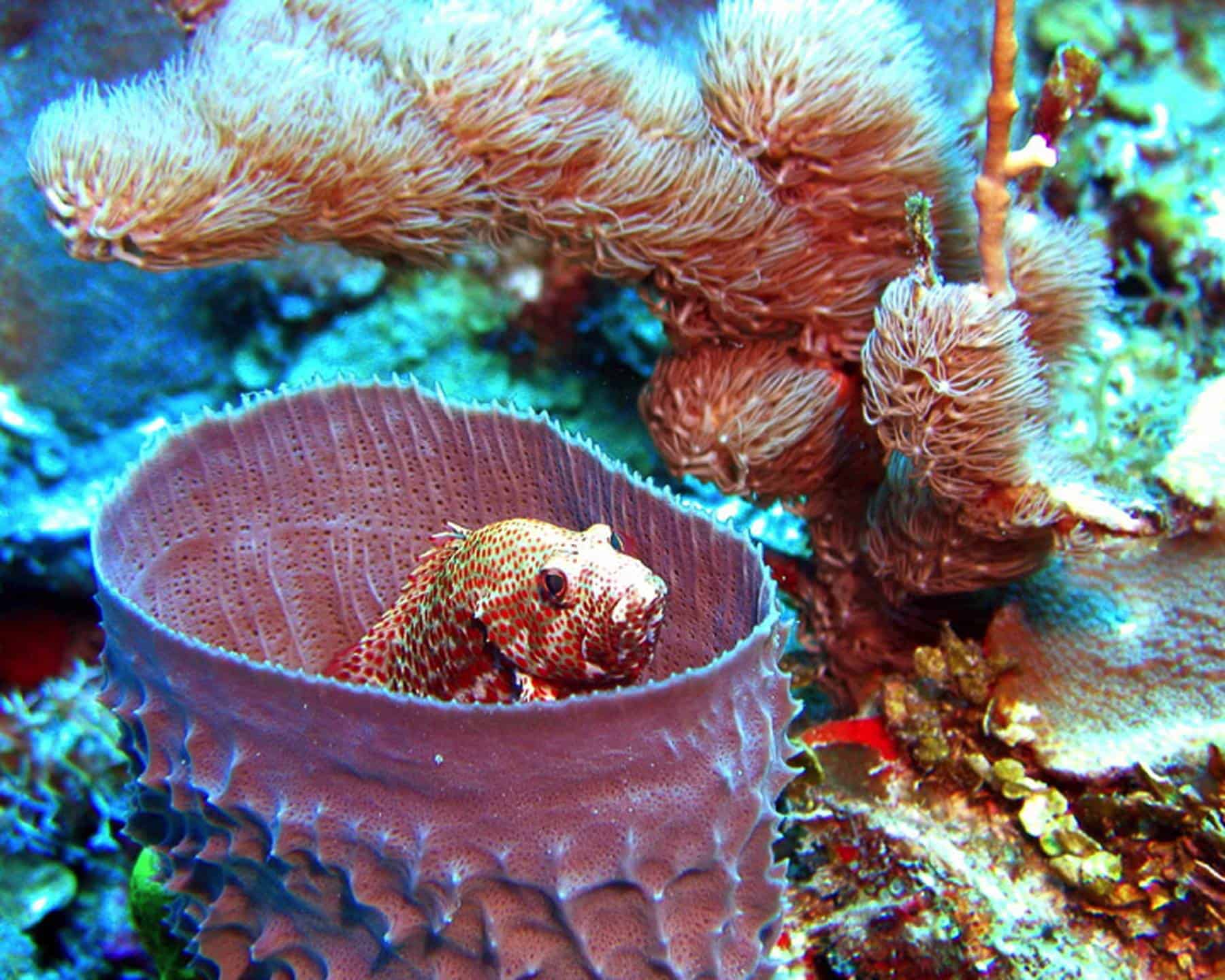Crystal clear waters, warm temperatures, and miles of barrier reef make Belize a top destination for divers both beginner and advanced. Belize is home to the largest unbroken barrier reef in the western hemisphere. The reef spans the entire coastline of Belize and offers prime diving experiences.
Belize is located between Mexico and Guatemala with a coastline of 185 miles. It’s known as a world-class dive location because it has dive sites for all skill levels and warm pristine waters. The most famous site is The Blue Hole which is a massive circular sinkhole in the middle of the ocean. However, beyond The Blue Hole, are other sites such as Hol Chan Marine Reserve, The Atolls, Shark Alley, and Gladden Spit.
- The Blue Hole- Massive marine sinkhole
- Hol Chan Reserve- Marine reserve in the middle of a crack in the barrier reef
- The Atolls- 3 of 4 coral atolls in the Western Hemisphere
- Ambergris Caye- Colorful reef diving
- Love Tunnels- Coral cavern with excellent visibility
- Esmeralda Canyons- Coral canyons populated with nurse sharks
- Caye Caulker- Coral reef and caves
- South Water Caye Reserve- Nurse sharks
- Gladden Spit- Whale sharks
- The Silk Cayes- Vibrant colors and lush marine life
When To Go
Belize is a subtropical climate making it warm all year round. Summer temperatures range from 75-85 degrees Fahrenheit and in the winter it’s about 70-80 degrees Fahrenheit. Diving is open year-round but special interest months are listed below.
April – June: Whale shark season in Placencia is an entire experience all in itself. It’s a must-see if you are traveling here during these months.
August – October: This is the wet season but the rains are usually isolated to a few hours each day. Expect fewer crowds because it’s low season for tourism. Since there are fewer tourists you will get better rates on diving and accommodation.
October – November: Grouper mating season brings in massive schools of fish.
November – July: Best visibility due to the dry season and no rain.
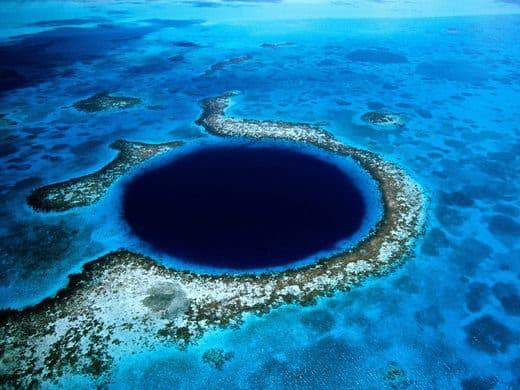
The Blue Hole
Skill Level: Intermediate to Advanced
Expect to See: Reef and bull sharks, whale sharks (April-June), turtles, grouper, parrotfish, tropical fish, coral, sea fans
This dive site is legendary. If you ever mention diving in Belize then you will hear about this site. You can all but guarantee that The Blue Hole is on just about every divers top 10 list.
Blue holes are some of the most amazing wonders of the ocean and they lure in plenty of eager tourists each year. Blue holes are marine sinkholes usually caused by erosion, tectonic plate activity, or rising sea levels covering ancient caves.
This nearly perfectly round site is 1,043 feet (318 m) wide and 407 feet (124 m) deep. There are many blue holes around the world but this one in Belize is the widest on earth.
The Blue Hole in Belize originally formed as a cave over 1530,000 years ago and flooded after the last Ice Age.
It’s a deep dive with a, somewhat, rapid descent. This dive is reserved for experienced divers and most shops won’t take you out unless you have at least 10 dives in your logbook.
Advanced certified divers can go down to 110-130 feet (34-40 m) where stalactites hang from the top of the cave.
The Blue Hole is located 60 miles (97 km) off the coast of Belize within Lighthouse Reef. The journey out to the location takes several hours and the waters are known to be rough. Consider this is a fair warning if you are prone to sea sickness.
World’s Top 11 Blue Holes For Scuba Diving
There is plenty of fish and coral here and there have even been reports of hammerhead sightings. Even those it’s rare to see a hammerhead you do have a chance of seeing reef sharks. Snorkeling is also an option at the Blue Hole.
Whale sharks make an appearance from April-June and is definitely a must if you are in the area.
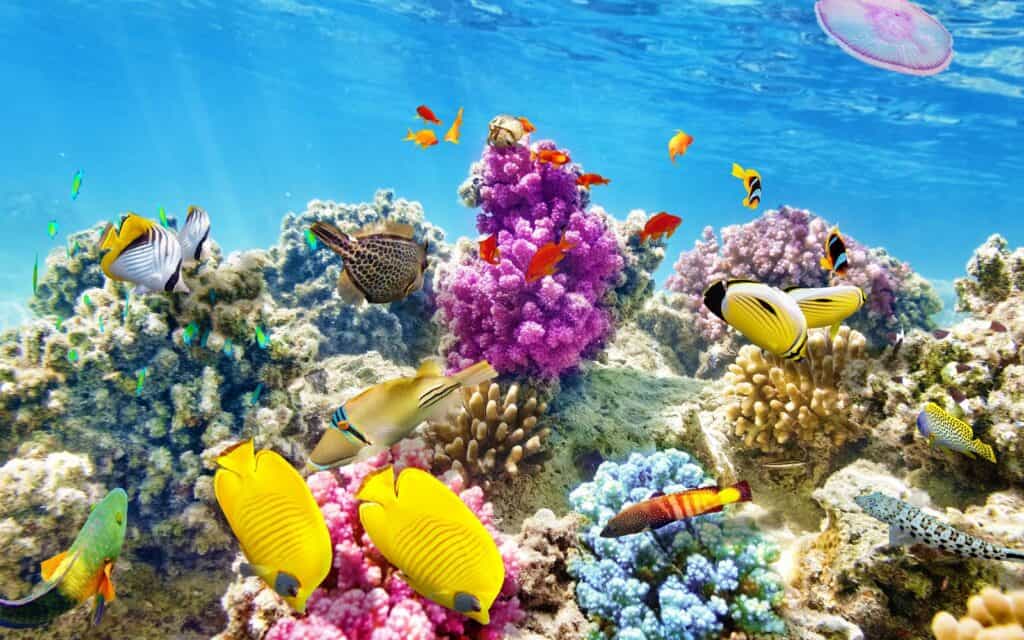
Hol Chan Marine Reserve
Ambergris Caye
Skill Level: Beginner to Advanced
Expect to See: Coral reef, sea sponges, snapper, barracuda, grouper, tropical fish, lobster, eel, nurse sharks
Hol Chan is a protected region and the oldest marine reserve in Belize. It’s a total of 3 square miles (7.8 sq km) and is broken down into 4 sections.
- Zone A: The Reef– Elkhorn, fire and brain coral, lobsters, blue tangs, triggerfish, barracuda, nurse sharks
- Zone B: The Seagrass Beds- Seagrass, 15 species of sea sponges, hard coral, lobsters, tropical fish
- Zone C: The Mangroves- Red mangroves, seagrass, sea sponges, anemones, juvenile fish species
- Zone D: Shark Ray Alley- Nurse sharks, jacks, grouper, snapper, barracuda, angelfish, eel, crabs, lobsters
The entry point to Hol Chan is through a crack in the barrier reef near Ambergis Caye island. Hol Chan is a heavily protected reserve that has a strict no touching, no fishing, and no anchoring policy. These restrictions have allowed the coral reef to flourish along with the marine life.
The coral formations are expansive with vivid colors and varied species. The site is a shallow dive with a maximum depth of 32 feet (10m). Even though it’s a shallow dive this site does sometimes have strong currents so keep that in mind.
Once you slide through the crack in the reef you will find yourself directly in the middle of the reserve. Tropical fish pass by as you encounter thriving reef systems in bold colors. It doesn’t matter what skill level diver you are, this site is well worth the visit.
Fish populations are very dense and have even been described as an explosion of fish. Expect to see many different species including barracuda, snapper, angelfish, and blue tangs.
Zone A is only 4 miles (6.4 km) south of San Pedro which is only a 15-minute boat ride. If leaving from Caye Caulker, the boat ride is 30 minutes and trips are usually full-day.
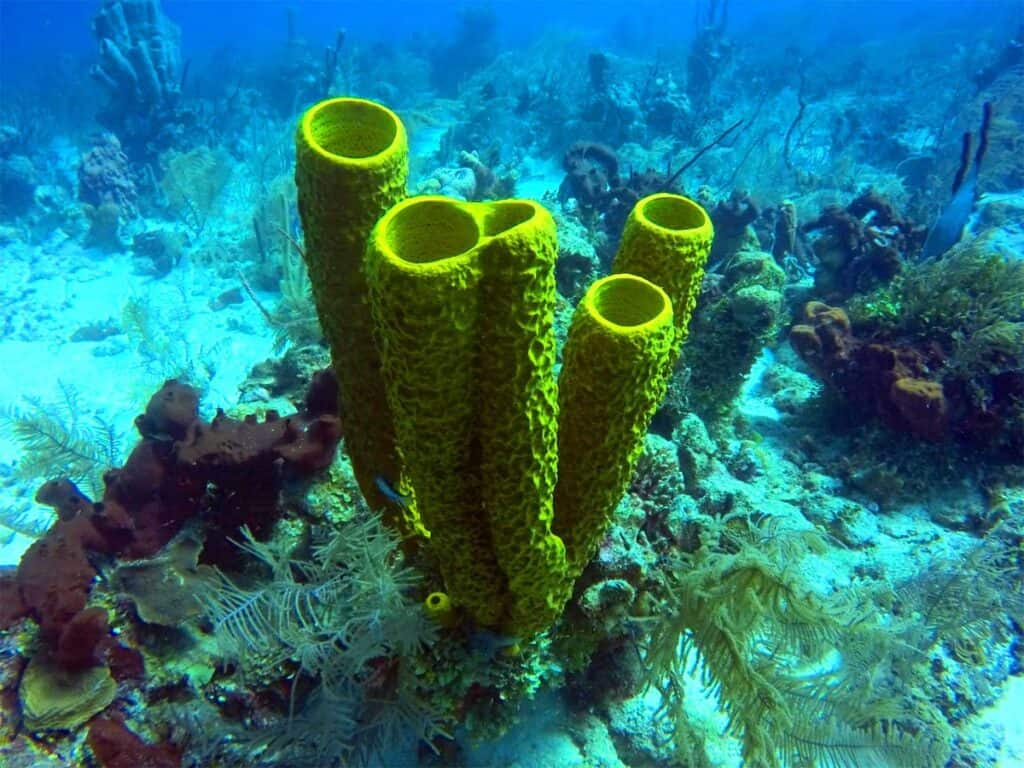
The Atolls
Skill Level: Beginner to Intermediate
Expect to See: Coral reef, coral gardens, canyons, channels, drop-offs, sea sponges, tropical fish, lobsters, jellyfish, barracudas, grouper, snapper, reef and nurse sharks, dolphins
Drifting out to sea past the barrier reef are 3 coral atolls. These are ring-shaped coral islands that are attached to the ocean floor. There are actually only 4 coral atolls in the western hemisphere and Belize is home to 3 of them. Which is kind of amazing.
All of the atolls have diverse reef topography including canyons, tunnels, caves, walls, grooves, and caverns. Along with a vast array of marine life including reef sharks, dolphins, and turtles.
Dive trips to the atolls can be full-day excursions or on longer liveaboards.
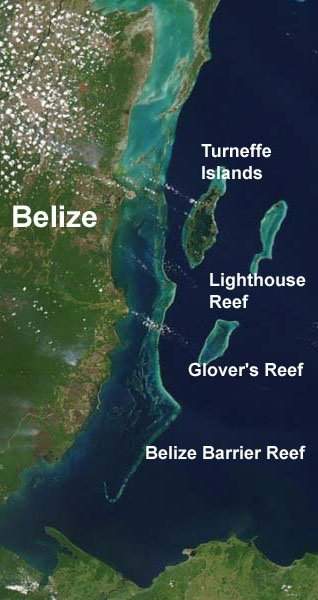
-Turneffe Reef
Turneffe Reef is the largest and closest to the shore. It’s about an hour’s journey (20 miles/ 32 km) from Belize City. Turneffe Reef is so stunning that it’s known to be one of the top dive locations in Belize. There are over 70 different dive sites at Turneffe Reef so there is definitely something for everyone.
The reef is 30 miles (48 m) long and 10 miles (16 m) wide making it the largest atoll in Belize. There are lots of mangrove islands and several hundred inlets.
There are dives for all skill levels with easy shallow dives to shipwrecks and drop-offs. Dives on the western side of the reef are ideal for beginners while sites on the southern and eastern areas are great for advanced level divers.
Visibility slightly varies depending on the exact dive site but it’s commonly around 80-100 feet (24-30 m). Visibility of up to 150 feet (46 m) has been reported in several dive sites at the reef.
A notable site is called The Elbow and is located at the southern tip of the reef. Divers can expect to see schools of fish, turtles, and rays. There are also lots of colorful soft coral and huge sea sponges. It’s commonly visited by most dive trips.
The Aquarium is a shallow dive filled with colorful coral and tropical fish. The maximum depth is 12 feet (3 m) with huge coral heads nearby at 35 feet (10 m). Visibility is wonderful and there are so many fish that it looks like an aquarium, hence the name. It’s a nice easy dive for beginners or to close out a day of diving.
Sayonara Wreck was a former passenger ship used by the Turneffe Reef Lodge to transport guests. It was intentionally sunk in 1985 to create an artificial reef and dive site.
There is a vast amount of sea sponges growing on and around the ship with huge coral formations nearby as well. Basket sponges growing on the ship range from 4-5 feet (1-1.5 m) tall.
It’s a great shipwreck site especially for beginner divers. Depth ranges from 30-60 feet (9-18 m) and visibility is 50 feet (15 m).
The wooden framed boat is deteriorating and fragile so it’s recommended to not enter the ship or touch it.
-Lighthouse Reef
Lighthouse Reef actually encircles the infamous Blue Hole dive location and is the furthest atoll from the mainland. It’s 50 miles (80 km) off the coast of Belize City.
Visibility ranges from 80-130 feet (25-40 m). It’s commonly visited on dive trips destined for The Blue Hole since it’s actually located in the center of Lighthouse Reef.
There are verticals corals and coral gardens set in crystal clear waters. There are several dive sites at this atoll with both easy shallow dives and deeper wall dives.
Half Moon Caye is a site commonly visited on liveaboard trips. It’s located on the southeast corner of the reef and a must-see for all divers. If you’re dive group isn’t planning on coming here then ask to have it included.
The dive at Half Moon Caye starts off on a sandy patch which extends all the way out to a reef wall. There are several tunnels to swim through which lead over the reef wall.
Expect to see lots of healthy and colorful coral along with groups of eel, tropical fish, and rays.
Long Caye is the best site to go to if you love coral. It’s packed with coral gardens of brain and star coral along with several species of sea sponges. The colors are vibrantly purple, yellow, and pink as tropical fish swarm around.
At Long Caye there are channels nearby where jacks, snapper, and grouper hang out. Caribbean reef sharks also frequent the area.
There are 6 shipwrecks located on the eastern section of the reef with 3 of the ships sit above the water on top of the reef and are clearly visible.
-Glover’s Reef
Glover’s Reef is by far the most remote and hardly visited by divers. It’s also the most completely formed coral atoll in Belize. Glover’s Reef is a 50-mile (80 km) fringing reef drop-offs that are wildly colorful and home to a vast marine life population.
There are even coral pinnacles to gaze at. There are 700 patch reefs here with over 100 feet (30m) of visibility no matter which location you visit. It takes 1.5 hours to reach Glover’s Reef by boat and full-day trips are to the reef are available.
This reef is the smallest atoll in Belize at 20 miles (32 km) long and 7.5 miles (12 km) wide. It’s also the most southern making it the least visited. Any dive location that is hardly visited is definitely gold. Pristine reef and healthy fish populations make it well worth the journey.
The Reef is named after 17th-century English pirate brother John and Rodger Glover who used the remote island as a base. They ventured back and forth to Honduras to battle with the Spanish.
Manta Wall are swim throughs created by colorful coral formations. Nurse sharks and giant grouper are almost always seen roaming around.
The Pinnacles are full of massive coral heads that are 40+ feet (12+ m) tall. This site is only worth diving when visibility is high. There are over 36 giant coral pinnacles with the tallest measuring 100 feet (30 m). It’s a very unique dive and a prime location for photography.
The Wall (Long Caye Wall) is a drop-off that is 3,000 feet (914 m) deep. The drop off begins 35 feet (10 m) below the surface. The site boasts huge canyons as well as tons of varieties of coral and sea sponges.

Ambergris Caye
Ambergris Caye Island
Skill Level: Beginner to Advanced
Expect to See: Coral reef, sea sponges, channels, canyons, grouper, eels, seahorses, clams, crabs, tropical fish, reef and nurse sharks, whale sharks (April-June), ray, turtles
One of the many islands of Belize is Ambergris Caye. It is locally known as ‘La Isla Bonita’ or The Beautiful Island. With a population of 17,000 and a fun, easy-going atmosphere it’s no wonder why tourists love it.
There are several dive sites nearby that are perfect for beginners or anyone looking for an easy dive. You can also get certified as a diver here as well. This really does make the island a perfect place to stay with plenty of accommodation to choose from.
There are over 50 well know dive sites with the majority of dives along the Barrier Reef. The island is only a 5-10 minute boat ride from some of the most lush and enjoyable diving in Belize.
40 foot (12 m) Georgian coral are common along with boulder and pillar formations. Sea fans and sea sponges are everywhere with too many tropical fish species to count.
Mexico Rocks is a shallow patch reef located on the northern portion of the island. It’s a shallow dive with no current and good visibility. There are boulder corals 10-13 feet (3-4 m) high
Mexico Tunnel is located near Mexico Rocks and is a 130 foot (39 m) long tunnel created by reef spurs. The tunnel is at a 65-foot (20 m) depth. Tropical fish, grouper, and sea fans are just some of the things you can expect to see along the way.
Tackle Box Canyons is full of interesting topography including tunnels, vertical walls, canyons, ridges, and caverns. There are also several species of coral such as pencil, elkhorn, brain, and boulder.
At Tackle Box you will see lots of fish like barracuda, jacks, grouper, snapper, and tropical species. Visibility is usually right at 65 feet (20 m).
Visibility in the area is almost always over 100 feet. Hol Chan Marine Reserve is located at the southern tip of the island. You can also organize trips to larger sites such as The Atolls or The Blue Hole.

Love Tunnels
San Pedro, Ambergris Caye
Skill Level: Beginner
Expect to See: Coral, drumfish, scorpion fish
Love Tunnels is a coral cavern that almost feels like a cave dive. It’s a great experience for beginners who are interested in taking a cave diving course.
This site is called Love Tunnels because there have been two underwater weddings here.
The tunnel is located at 65 feet (20 m) and as you swim through it takes you to the edge of a drop off of 90 feet (27 m). Visibility is always excellent.
Once exiting the tunnel you swim out over the drop off and get to see lots of hard and soft coral formations. Juvenile fish along with grouper are the most common fish seen.
It takes about 25 minutes to reach this location from San Pedro, Ambergris Caye Island.
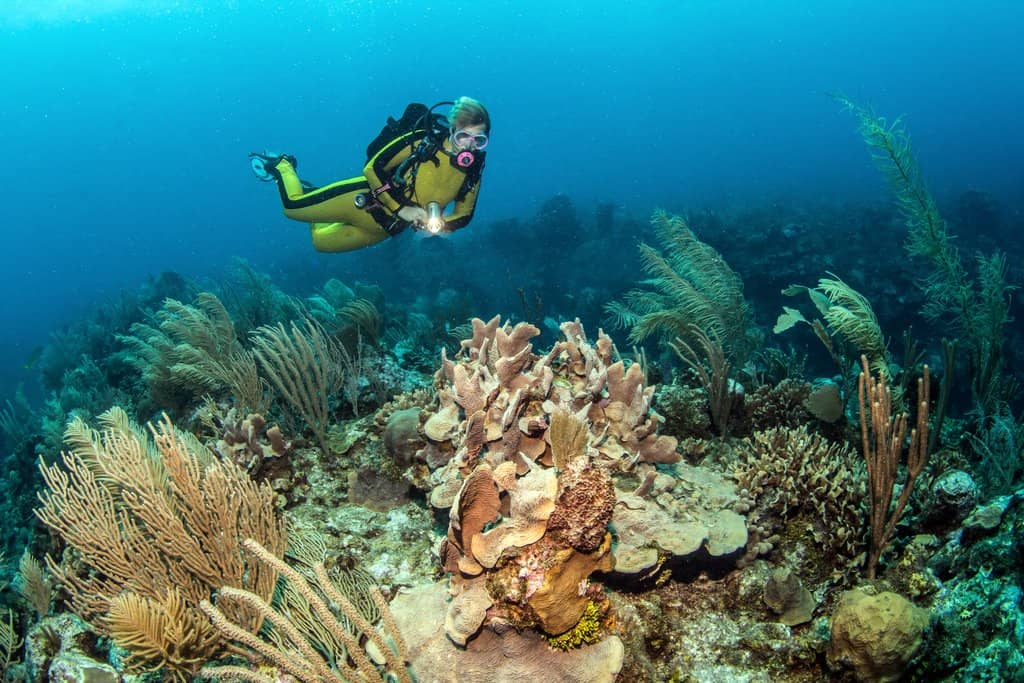
Esmeralda Canyons
Caye Caulker or Ambergris Caye
Skill Level: Beginner to Intermediate
Expect to See: Coral ridges, canyons, lobsters, eels, nurse sharks, parrotfish, black durgons (black triggerfish), grouper, rays, turtles, crabs, shrimp, squid
If the name didn’t tip you off expect to see lots of beautiful deep coral canyons with plenty of colorful tropical fish. There is a strong nurse shark population here and you can easily spot many of them napping on the ocean floor.
Dives usually start off at 70 feet (21 m) as divers wander around the canyons and interesting topography. There are at least 10 species of coral along with 5 species of sea sponges.
There are lots of small crevices and great little spots for eels and turtles to hide in. Black grouper, eel, and nurse sharks are the main marine life attractions with plenty to be seen.
All levels of divers can explore Esmeralda Canyons since is relatively shallow and there is no current.
Entering the water at this site can be a little intimidating. The seas swell with waves commonly 3 feet (1 m) high. Since the water conditions are a little rough, divers need to descend as soon as they enter the water. The maximum depth is generally between 60-80 feet (16-24 m).
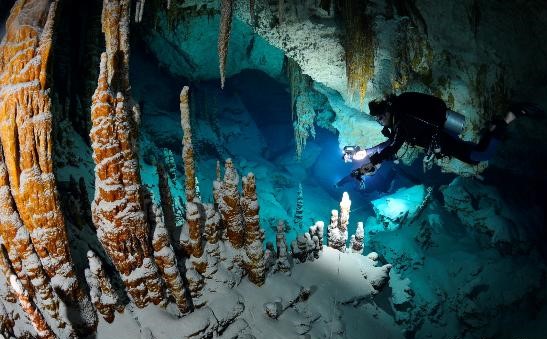
Caye Caulker
Caye Caulker Island
Skill Level: Beginner to Advanced
Expect to See: Coral reef, caves, nurse sharks, tropical fish, barracuda, jacks, eel, lobster, turtles, rays
Caye Caulker is another island of Belize. There are no cars here and the atmosphere is calm and relaxed. The barrier reef is right near the island and there are many dive sites in the area. The waters are calm and crystal blue which makes them great for beginners.
Since the island is located right next to the barrier reef there are tons of site sites that can keep any diver occupied for weeks and weeks. Night diving is also common so that’s always a fun option as well.
Caye Caulker Marine Reserve is only a 15-minute boat ride from the island. It was named a protected area in an attempt to allow reefs to rebuild, health, and for marine life to reestablish themselves.
There are nice rows of reef formations along with jack, trigger and your typical reef fish species.
Rock Beauty is a 60 foot (18 m) dive to giant sea fans and schools of tropical fish. It’s a very popular site with local divers.
Sand Trap is full of various fish species and turtles. The coral formations are abundant and healthy. If you like searching for anemones then this is a great spot for you.
Queen Canyons has a fun mix of steep walls, tunnels, and canyons ready to be explored. This site offers some interesting topography and is a good spot to take photos.
St. George’s Caye is a 40 minute boat ride from the island and is a coral wall 135 feet (41 m) deep. The wall begins at 35 feet (10 m) and extends downward to 135 feet (41 m). Dives along the wall are typically drift style and good for beginner and up.
The wall at St. George’s Caye is full of hard and soft coral as well as ell, lobster, and barracuda. Take things slow and really take a look inside all the little cracks in the wall. This is where lots of marine life like to hide.
You can also arrange trips to larger sites such as The Blue Hole, Hol Chan Marine Reserve, and The Atolls from dive shops on the island.
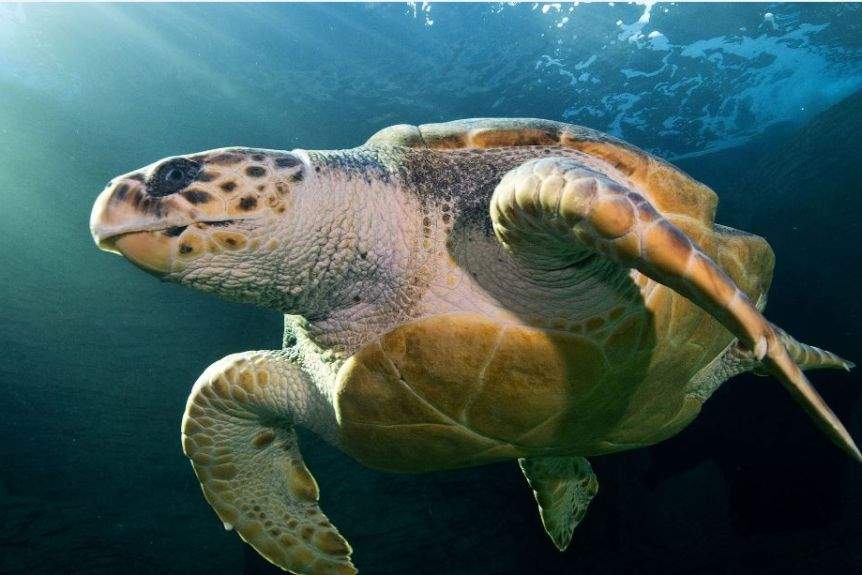
South Water Caye Marine Reserve
Palencia or Hopkins
Skill Level: Beginner to Intermediate
Expect to See: Coral reef, tropical fish, octopus, squid, rays, eels, turtles, manatees, grouper
South Water Caye is the largest marine reserve in Belize at 118,000 acres (477 sq. km). The area is covered in mangroves, fringed islands, and untouched reefs. It’s located just 10 miles (16 km) off the coast of Belize and is accessible via boat in Palencia, Hopkins, or Dangriga.
There are many dive sites at the reserve and range from easy shallow reef dives to deep wall dives. There is something for all levels of diver including great snorkeling sites.
The reefs are colorful and diverse and the location is slightly isolated. The area is calm and relaxed with no crowds at dive sites.
It’s possible to stay at one of the resorts on the reserve which makes diving or snorkeling so close it’s nearly at your doorstep. For the budget-conscious traveler, head to Tobacco Caye Island for deals on accommodation. Otherwise, full-day trips are easily arranged in either Palencia or Hopkins.
Rosella’s Garden is a colorful oasis of patch reefs and tropical fish. Expect to see nurse sharks, rays, and turtles swimming between the reefs. The maximum depth is 60 feet (18 m) and the visibility is fantastic.
The Abyss is a wall dive that begins at 40 feet (12 m) and plunges into the deep depths of the ocean. Visibility is always spectacular and at least 100 feet (30 m). There are colorful hard and soft reef formations along with the usual tropical fish. Rays, turtles, and lobsters are common along with a few nurse sharks.
Tobacco Cut is a cut in the reef that is perfect for exploring. The reef is in great condition with tons of colorful fish and lots of photo opportunities. Tobacco Cut is an easy shore dive from Tobacco Caye Island.

Gladden Spit
Placencia
Skill Level: Intermediate to Advanced
Expect to See: Tropical fish, snapper, jacks, dolphins, nurse sharks, whale sharks (April-June)
Gladden Spit is located 30 miles (48km) off the coast of Placencia which takes about 1 hour 30 minutes by boat. It’s the best place to see whale sharks from April to June. These are the months that whale sharks come to feast on the eggs of spawning fish.
Gladden Spit is actually a spawning aggregation site which means several species of fish come here to spawn. It’s a fantastic opportunity to see many different species of fish. There are currently over 20 species of fish that come to Glidden Spit to spawn.
Whale sharks grow up to 60 feet (18m) and are docile fish. They are calm and relaxed which gives divers an opportunity to swim alongside them. Glidden Spit is one of only a few places in the world where you can dive with whale sharks.
The dive is done mid-depth to a maximum of 60 feet (18 m) and usually only recommended for intermediate divers (20+ dives) and experienced snorkelers.
Whale sharks are naturally very curious they will come up and swim next to divers. There is absolutely no aggression in the way whale sharks interact with divers or snorkelers.
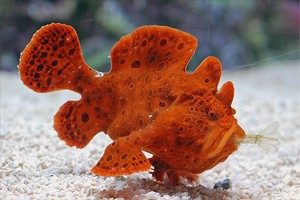
The Silk Cayes
Placencia
Skill Level: Beginner to Intermediate
Expect to See: Coral, tropical fish, frogfish, turtles, crabs, reef and nurse sharks, stingrays, eels, barracuda, grouper
The Silk Cayes is home to one of the widest varieties of marine life in Belize. The marine reserve is also home to the elusive Spotted frogfish. The wide array of fish and vibrant colors make it a fantastic spot for underwater photography.
Silk Cayes is located 22 miles (35km) off the coast of Placencia near a group of small uninhabitable islands. The maximum depth is 100 feet (30m) but more shallow dives are conducted for beginners.
White Hole is a sandy bottom dive with plenty of grouper, rays, nurse sharks, and eels. 30 feet (9 m) below the surface of the water lays the pure white sandy bottom which slopes down into a 70 foot (21 m) drop off.
The North Wall is one of the best dive locations in Belize for coral formations and tropical fish. The water quality is amazing which allows for such healthy and colorful coral reef.
There are tons of tropical fish swimming through the reef and a few nurse sharks as well. Anemones are here if you think you are up for the challenge of locating them.
The beginning of the dive at The North Wall goes to 80 feet (24 m) and then gradually slants upward to 40 feet (12 m) at the reef crest.
Turtle Canyons is to the north of The North Wall and is full of hawksbill and loggerhead turtles. The turtles like to use this site as a resting spot. It also doubles as a fish nursey for crabs, shrimp, and spotted drums. The dive is shallow and maxes out at 60 feet (18 m).
The Wreck is a tugboat that was intentionally sunk in 2002. Miss Panda was sunk to create an artificial reef and a dive site. The ship is 90 feet (27 m) below the surface and in relatively good condition. Barracuda and grouper populate the area and are often seen chasing after prey.
